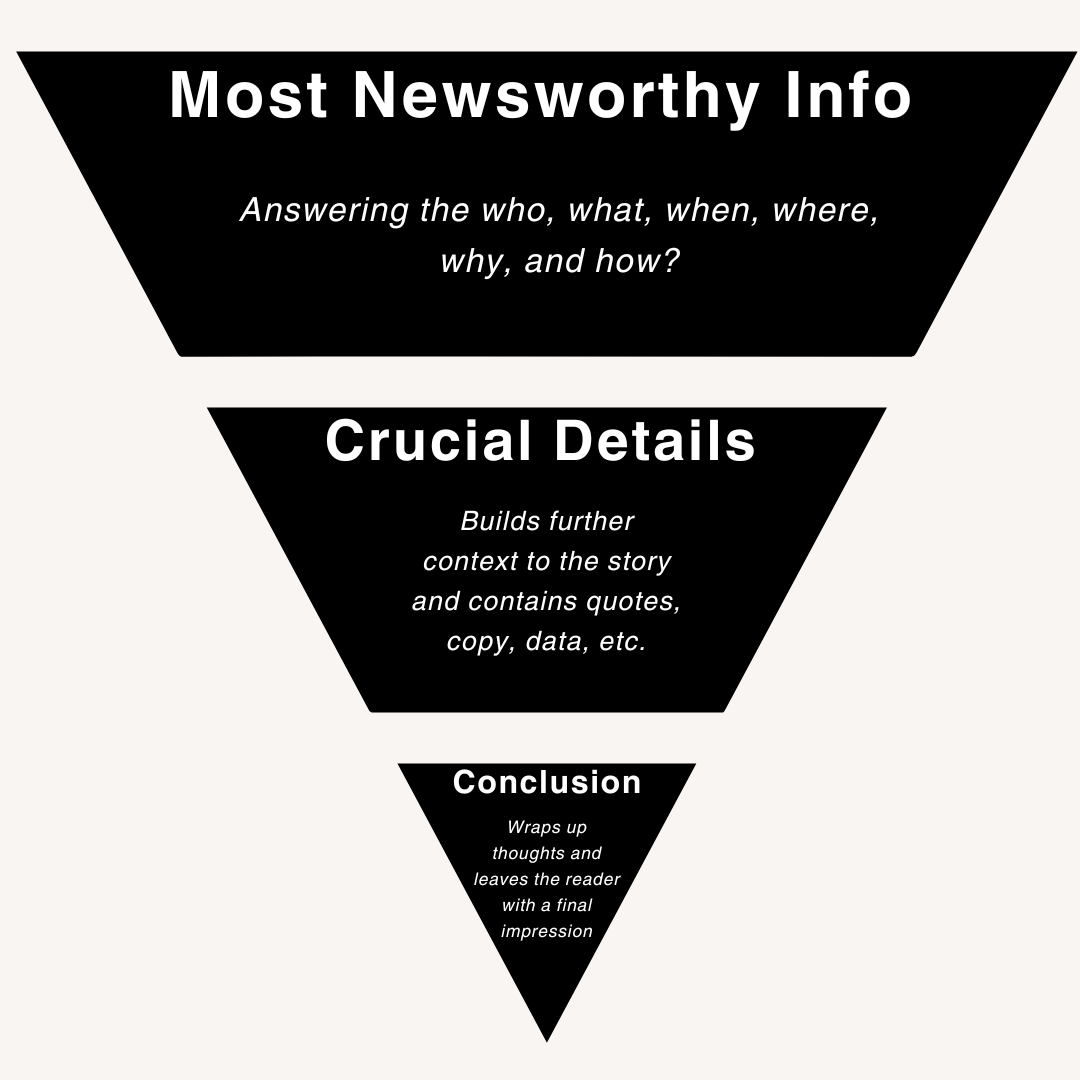Readers are bombarded with information from all sides, and their attention spans are shorter than ever. So it’s crucial for journalists to be able to write stories that grab attention and hold it from the beginning to the end. Here’s where the inverted pyramid concept comes into play.
What is the Inverted Pyramid?
Imagine a pyramid, but flipped upside down. The widest part sits at the top, representing the most crucial details of your story. As you move down the pyramid, the information becomes progressively less essential.
The key principle is to front-load your article with the most newsworthy and attention-grabbing information. This includes:
- The 5 Ws. Who, What, When, Where, Why – answering these essential questions in your lede (the first few sentences) provides a clear understanding of the core issue.
- The most impactful quotes from the important figures in your story add intrigue and set the tone for the rest of the piece.
- Compelling statistics or facts you’ve uncovered from thorough research can instantly capture a reader’s attention and establish significance within your story.
By prioritizing these elements at the beginning of a story you hook your readers and entice them to keep reading into the details that follow. As you write your lede, nut graf, and transition into your quotes, you should always keep the inverted pyramid idea to guide what information you ought to write about next.

Benefits of the Inverted Pyramid
The inverted pyramid offers several advantages for journalists:
- Presenting the most crucial information upfront keeps readers engaged and prevents them from losing interest before reaching the end.
- This structure forces you to prioritize information and avoid unnecessary details, resulting in a clear and well-organized story.
- While the inverted pyramid prioritizes the lead, it doesn’t restrict the flow of information. You can still provide context, background information, and alternative perspectives in the following paragraphs.
- This structure can be applied to various news stories – breaking news, investigative reports, feature articles, etc. It will universally provide a consistent and reader-friendly approach.

Here’s an example of the inverted pyramid in practice. Take a quick read through it and you’ll find the following traits:
- The first two sentences establish the core message — 1. Texas is experiencing more frequent and intense natural disasters due to rising temperatures and 2. The topic of Climate change (5 W’s).
- Supporting details follow, including an expert quote from the key source and directly quoted, specific examples of how climate change will affect Texas.
- Data that establishes the tone for the topic of the story and indicates that there’s important information being communicated to the reader.
3 Tips to Use the Inverted Pyramid in Journalism
Here are three tips to effectively utilize this concept:
- Identify the Main Point. Before starting to write, brainstorm to determine the central theme or message you want to convey.
- Start strong by crafting a captivating lede that encapsulates the essence of your story. This will allow you to transition into your high-quality information.
- Organize Your Information. Be sure to arrange your supporting details in a logical order from most to least important.
- Write concisely to avoid redundancy and focus on clear, impactful language.
Keep in mind that the inverted pyramid is a tool, not a rule. As you continue to write stories, you’ll learn to use the tool differently as your story needs change, and overall you’ll learn to utilize it more effectively. In addition, by prioritizing the most newsworthy information upfront you will ensure your story can captivate readers when they first glance at your article.
Want to learn more? Our free glossary tool defines key journalism terms and provides original insights for aspiring journalists. Don’t forget to follow us on Instagram and LinkedIn, and stay tuned to our blog for free content every week!

